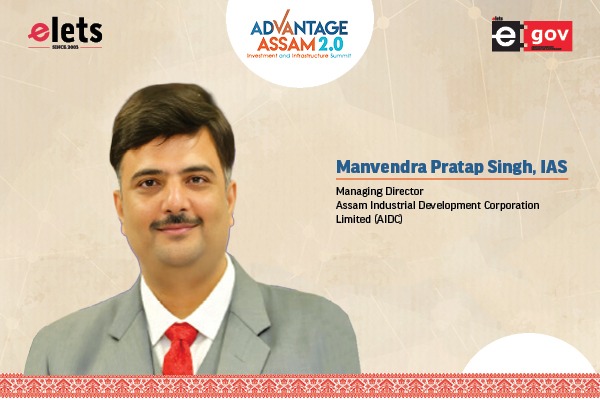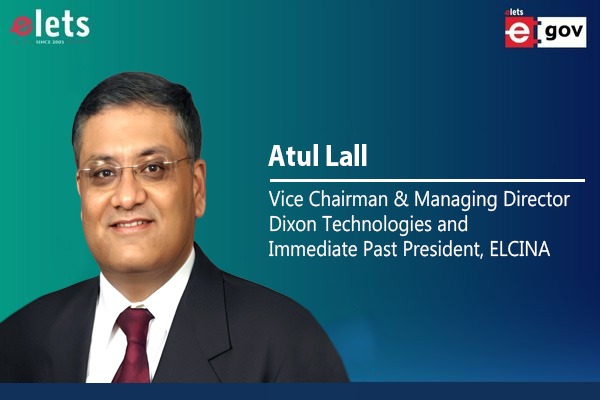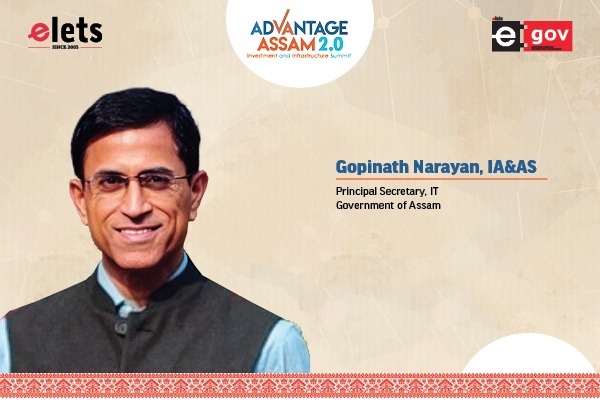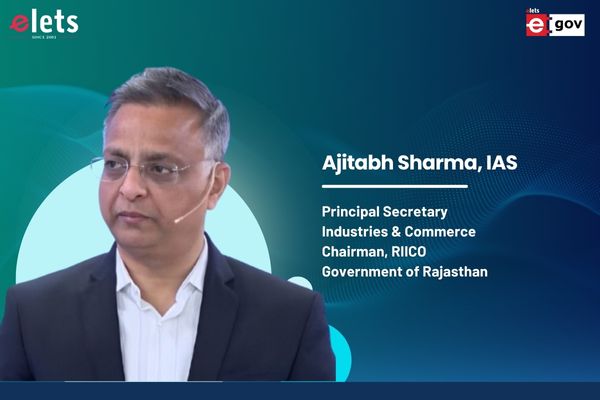
The Namami Gange Programme of NMCG is an integrated umbrella initiative of River Ganga Conservation & Rejuvenation along with maintaining biodiversity, green cover & Larger ecosystem of not only the Ganga main stem but also its tributaries, says Rajiv Ranjan Mishra, Director General, National Mission for Clean Ganga in an interview with Ritika Srivastava, Elets News Network (ENN).
Shed some light on the Namami Gange project.

Namami Gange is an integrated Ganga Conservation Programme that comprehensively addresses pollution issues in Ganga main stem as well as its tributaries. Taking an ecosystem approach, the programme also approaches biodiversity and flora conservation and augmentation, ensuring sustainable wateruses and finally overall protection of the Ganga basin and its constituents. This is not a mission limited to Ganga but extends to its tributaries as well. So it may be Yamuna, Gomti or river Damodar, etc. Ganga cleaning has been a long-drawn process. It all started off with Action Plans and plans for other tributaries like Gomti Action Plan, Yamuna Action plan and for each river there is a plan. For each plan, there are phases like Ganga Action Plan-1, Ganga Action Plan-2 and for Yamuna River there used to be Yamuna Action Plan-1, Plan-2.

We brought all of them together under one umbrella mission because earlier we used to have fragmented thinking. Therefore, to grapple with all these problems collectively, the ‘Namami Gange’ programme integrating all the constituents was launched with systemic approach.

We look at industrial pollution, sewage pollution and also pollution from chemical fertilizers through agricultural run-off in to the river. Sustainable agriculture has also, therefore, been incorporated in the ‘Namami Gange’ mission.

Afforestation, which has a huge potential in augmenting rainfall and can lead to a cleaner and greener environment, is the call of the day. The focus should be on augmenting the water quantity in the river, which is popularised by the name of ‘Aviral Dhara’.
The next target is improving the mass connectivity and ownership of the rivers through river-front development, modernising of the ghats with better amenities and thus making rivers a public space for city use. There is a plenty of aquatic life within the river, which needs to be conserved to maintain quality of water. Science-based and event-based methods, as developed by a consortium of seven IITs, are being employed which are intended to reverse the loss of aquatic life in the river.
What are some of the recent initiatives taken by NMCG in cleaning the river Ganga and how are those being executed?
The overall approach of this mission lies in cleaning all the tributaries of Ganga. We have taken a slew of initiatives to curb pollution in Ganga. The primary source of pollution being sewage, we evaluated our shortfalls in the earlier approaches. The major reason why previous mission remained incomplete was due to the lack of finances and continuity in funding.
But as of now, we have got funding of Rs 20,000 crore for the mission for five years. The funding structure is such that it is non-lapsable; it stays with the NMCG, which helps in prospective planning. We looked at all the towns surrounding Ganga and looked at the sewage profile and scrutinised the quantity of sewage generation and how much is uncovered for the treatment. Almost all the projects in Uttarakhand are at an advanced stage of progress and are likely to be completed by the end of this year. 19 out of 30 projects have already been completed. The major projects are located in Haridwar and Rishikesh.
The two STPs, which are under construction, will also be completed by this year. One is located at Jagjeetpur with 68 MLD capacity and the other one is at Sarai of 14 MLD capacity. The STP at Sarai is complete and is under trial runs. The Jagjeetpur STP would be completed by August 2019.
In the states of Uttrakhand and Jharkhand, complete infrastructure is ready. These projects are going to be maintained for 15 years. Same situation is in Kanpur, Patna, Prayagraj and many other cities.
The take-over operation of all the STPs includes maintaining and operating them for 15 years to ensure that untreated sewage from treatment plans does not flow in to the river Ganga. That has been completely diverted. We have started improving the capacity utilisation of STPs because many of them were functioning at low capacity of onethird of the installed capacity. These are some of the initiatives which are even implemented in Prayagraj.
These are some of the initiatives which led to the completion of projects on time and also by maintaining the quality of projects for 15 years. In Patna also, a similar strategy was adopted. The state does not have much sewerage capacity along with Ganga stem. We have got projects for all 18 towns in Bihar. With our projects, we are already increasing it by almost 10 times from 64 MLD to 620 MLD. So complete sewerage and STP infrastructure being created in Namami Gange, and three STPs will be created in Patna.
Our other initiative is on bio-diversity sector, wherein we are focusing on bio-diversity colonisation, along with the wildlife rejuvenation.
In order to treat the industrial pollution in Kanpur, we are starting the construction of common effluent treatment plant. Another initiative has been monitoring and enforcement on the industries. We are involving third party agencies and institutes like IITs, NITs, etc.
How is NMCG working towards making the areas, through which river Ganga flows, attractive for tourists?
Ganga, the holy river, changes its shape and beauty whenever it passes through different cities. Even the name by which river Ganga is known among the people changes across the states like Uttar Pradesh, Bihar or West Bengal. We are working on reviving the fresh water quality because it works as an attractive constituent for mesmerising tourists. Facilitating better amenities like clean ghats and pure drinking water have led to increase inflow tourists summing up a pleasant experience. We have launched a floating museum on the Ganga in Varanasi. The two advantages of creating this museum, apart from attracting tourists, lie in educating them about the holy river of India and on generating a sense of responsibility among them to keep it clean.
A similar strategy was planned while organising the Kumbh Mela and one can observe it did wonders in attracting tourists and was celebrated with much enthusiasm and joy. For creative promotions of Kumbh Mela we partnered with different agencies for painting the ghats and cities and this creativity fascinated a quite large proportion of tourists as compared to the previous years. This thinking of ours also struck a spark in Patna and one can see it how beautifully the painters crafted their art on the antiquated buildings and now they look like renovated forts and has enhanced the national glory.
In Patna, people can walk around the river-front which has been developed under this project. Our organisation has even done some painting over there and has created audio-visual centres. In addition to all these, we have a beautiful Ganga anthem which is played along with Ganga aarti.
What are the major challenges faced by you while planning and executing these initiatives?
Owing to the magnitude of the project, the gravity of the challenges is also large. Mapping of all the villages and towns around Ganga and in understanding what sort of work is required and expanding the forest area are major challenges for us. Through the help of various reputed institutions we were able to complete all the sets of requirements needed for initiating this mission.
The other big challenge that lies in front of us is in making people realise that their contribution can lead to the withdrawal of pollutants and make it a pollutant-free river.
Supposedly, if today a sewage treatment plant (STP) is created, then for another 15 years it would be the job of local bodies to ensure that it functions properly. NMCG would be supporting financially O&M also for 15 years. The role of local people living along the banks of Ganga River is greater because they visit the ghats for recreation, cremation, performing other rituals. They owe a big responsibility on their shoulders to keep it clean during this period of time. Transforming everybody in to a Ganga-lover was one of our major targets. We have achieved a considerable success in this direction.
Another challenge for us was to keep the river healthy in the middle of the urbanisation. Our history tells us that all cities develop on the banks of a river. But cities turned into megacities which somewhere led the rivers to disappear. Yamuna River in Delhi is one such example.
Augmentation and conservation of drinking water is another challenge. When Ganga reaches Haridwar, around 70 to 80 percent of its water is used for the agriculture purposes only. Since this constitutes a major chunk, we need to convey to the farmers to use water efficiently. Our water-use efficiency is not even 40 percent and if we could increase it by even 10-20 percent, it will lead to lower withdrawal from the river and a large volume of water so saved will help in enhanced flow in the river, realising the objective of ‘Aviral Dhara’ to a large extent – ultimately curbing pollution-load in the river.
Be a part of Elets Collaborative Initiatives. Join Us for Upcoming Events and explore business opportunities. Like us on Facebook , connect with us on LinkedIn and follow us on Twitter, Instagram.
"Exciting news! Elets technomedia is now on WhatsApp Channels Subscribe today by clicking the link and stay updated with the latest insights!" Click here!













